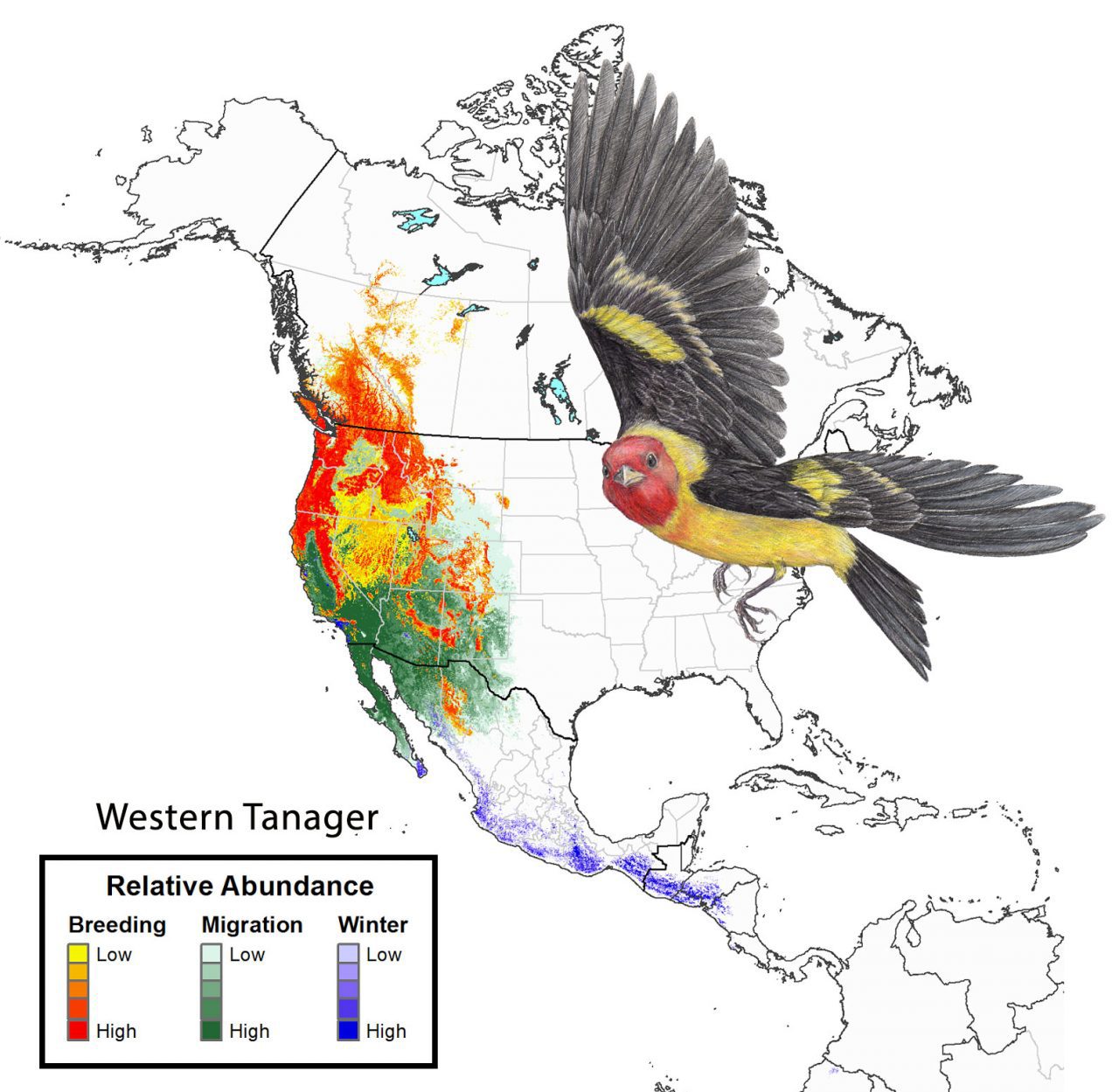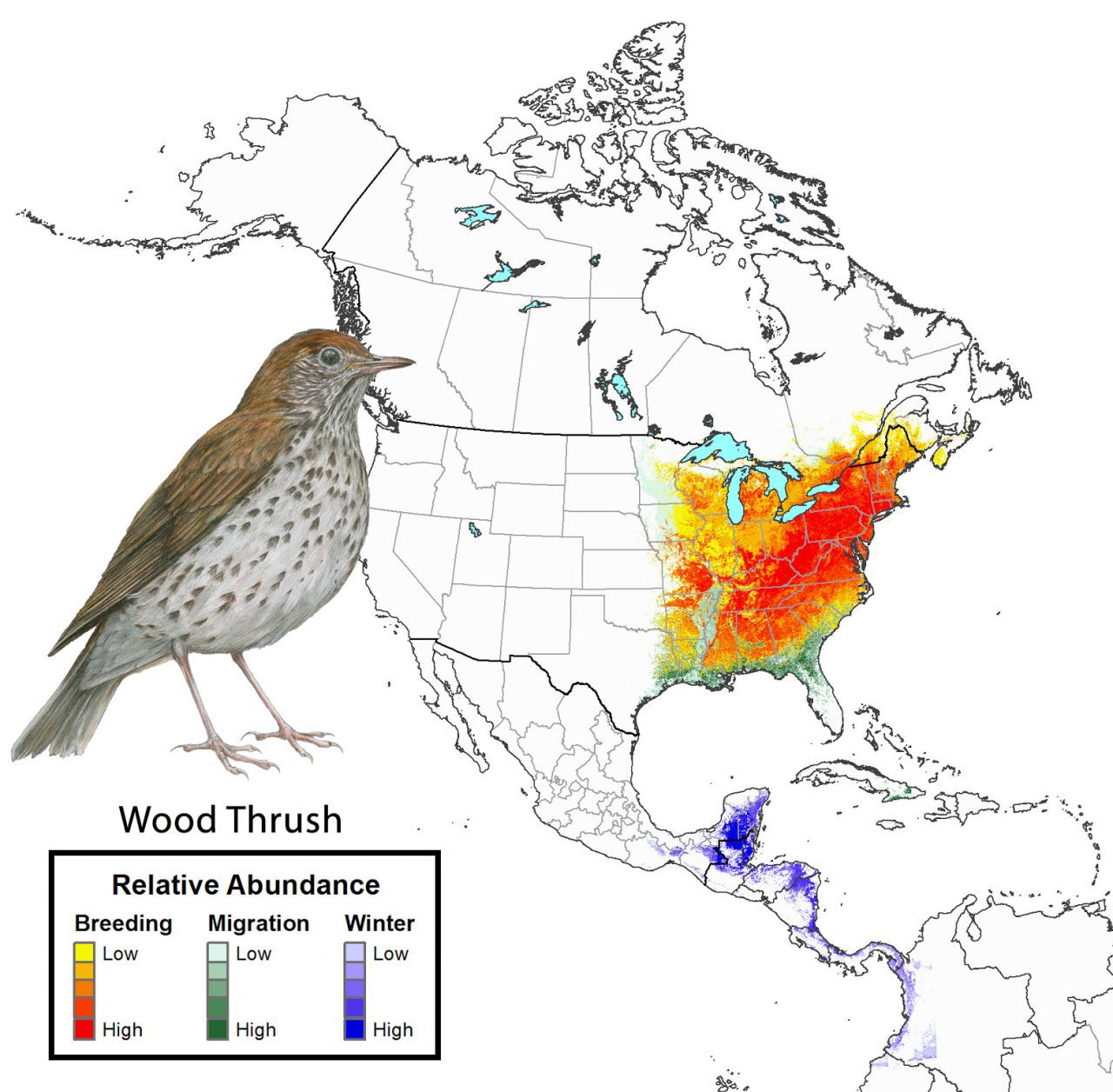Temperate Forests
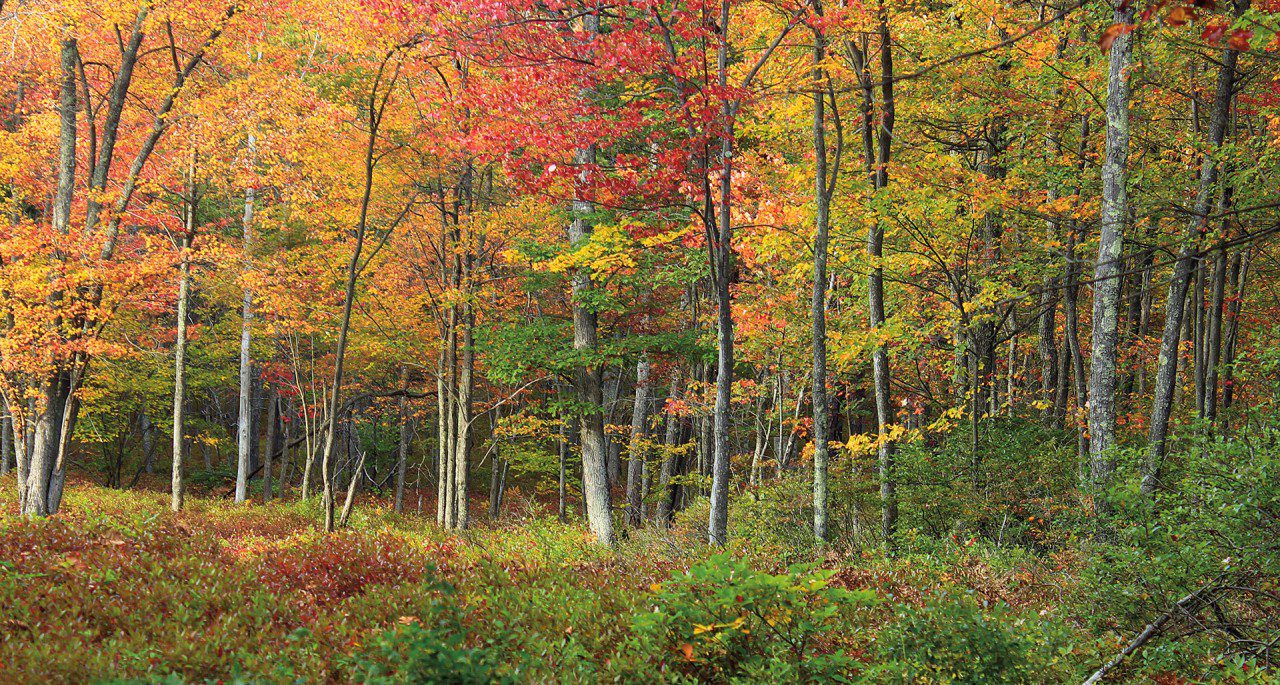
Diverse forests promote bird diversity
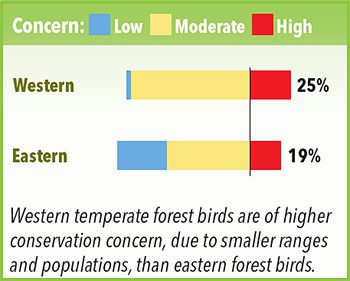
The temperate forests of North America include the maple forests of New England and the towering old-growth forests of the Pacific Northwest. In the East, there is more forest today than there was 100 years ago, yet forest stands lack the diversity of young and old trees that makes for prime bird habitat. In the West, fire is a key element influencing forests and bird habitat from Canada to Mexico.
Status: Positive trends with some concerns
Of the 144 temperatre forest bird species in the East and West, 30 are on the Watch List. About half of the birds that breed in U.S. and Canadian eastern temperate forests spend their winters in Mexican tropical evergreen forests. Some species, such as Wood Thrush, are in steep decline.
Eighty percent of western temperate forest birds spend the winter in western Mexican forests. These birds, such as Western Tanager, live in fire-maintained forests at both ends of their life cycle. Historically, fires were set by lightning strikes and native peoples. Today it is up to land managers to use fire to keep these forests healthy and resilient to pests and climate change.

Relative abundance of Western Tanager throughout its annual range. Click to view an animated version of this map. 
Relative abundance of Wood Thrush throughout its annual range. Click to view an animated version of this map.
Building on Success: Sharing best practices trinationally
The Quercus and Aves program prioritizes oak woodlands restoration using science-based bird conservation objectives along the Pacific Coast of North America. Regional partnerships initiated by Quercus and Aves have restored oak woodlands habitat on more than 20 sites on public and private lands in Oregon, Washington, and British Columbia. In Mexico, a regional pine-oak alliance has restored habitat on more than 1 million hectares in southern Chiapas, Oaxaca, and Guerrero, as well as farther south in Guatemala and Honduras.
Take Action: Forests need quality management
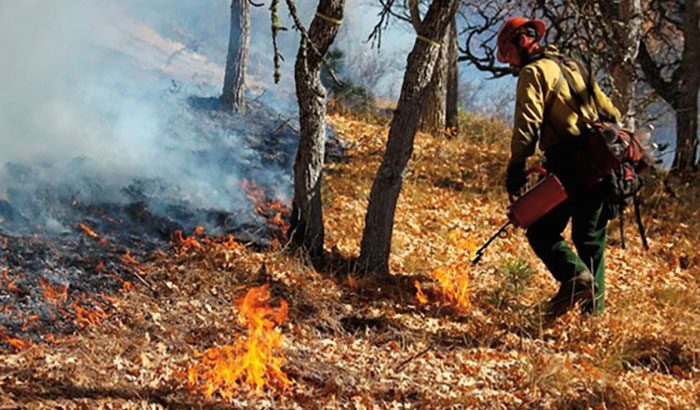
Our continent’s temperate forests can be managed to achieve conservation objectives while contributing to local economies.
- The Appalachian Mountains Joint Venture is planning for a mix of forest types from New York to Alabama. Integrating bird conservation objectives into forest management plans will diversify forest habitats across the eastern U.S.
- The Partners in Flight business conservation plan for western forest birds is developing more than a dozen pilot projects in Canada, the U.S., and Mexico that implement science-based forest conservation planning while supporting wood-product markets. These projects should become the blueprints for using bird and habitat conservation objectives to improve local economies.

